Words of wisdom on World Veterinary Day
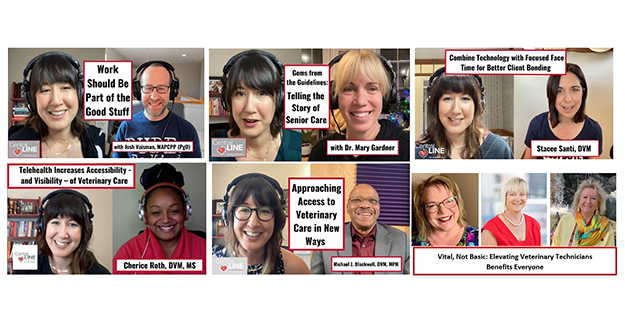 When we think of World Veterinary Day, it’s usually in terms of how far we’ve come in improving patient care. And it’s true—we are living in extraordinary times, including emerging tech, research innovations, new educational pathways and pedagogical approaches, legislative and regulatory decisions, drug breakthroughs, and more diverse treatment alternatives. It’s all happening—and what's going down now will likely influence the future of pet healthcare for the next generation.
When we think of World Veterinary Day, it’s usually in terms of how far we’ve come in improving patient care. And it’s true—we are living in extraordinary times, including emerging tech, research innovations, new educational pathways and pedagogical approaches, legislative and regulatory decisions, drug breakthroughs, and more diverse treatment alternatives. It’s all happening—and what's going down now will likely influence the future of pet healthcare for the next generation.
But all the technological advances are no match for the extraordinary shifts in culture these past few years. So, this World Veterinary Day, we’re offering some bite-size inspiration in the form of quotes from guests who’ve joined host Katie Berlin, DVM, on Central Line: The AAHA Podcast. Just as a reminder that, while we face enormous challenges in vet med, we are also in the profession at a pivotal time, and we’re surrounded by some really awesome people.
__________________________________
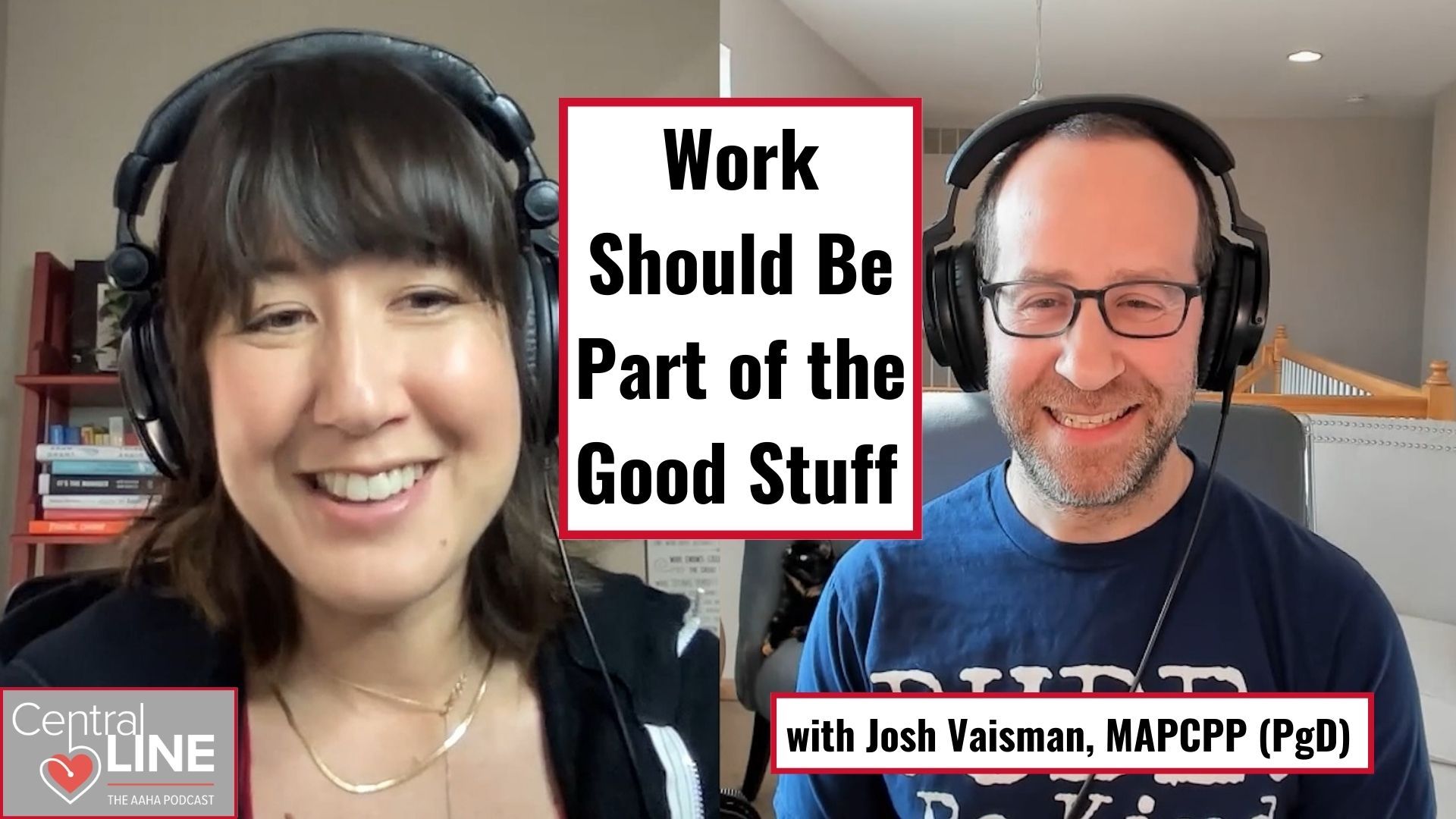
“Every single one of us—yes, even the introverts out there —we are hardwired for social connectedness. We need to feel like we belong somewhere, that we are included, that we're a part of something. To people that matter to us, we matter to them as well . . . that the people here actually really care about me as a human being. I'm not just a cog in the machine. I am a machine in and of itself. I am worthy because I am. In fact, I know that they care about me because even if I didn't work here anymore, they'd probably still care about me.
And while I'm here they don't just care about me as a person, they actually care about my success. They're here to help me succeed in the meaningful goals that I'm trying to achieve and the meaningful goals that this organization is trying to achieve.
So, it's not just about: ‘Where am I falling short? Where am I screwing up?’ It's: ‘What are my strengths and how can those strengths contribute to what we're trying to do together?’”
—Josh Vaisman, MAPPCP, CCFP
Episode 54: Work Should Be Part of the Good Stuff
[Editor’s note: Catch Josh Vaisman’s virtual book event on May 25 at 12:00pm Mountain Time. AAHA members, RSVP in the AAHA Community.]
__________________________________
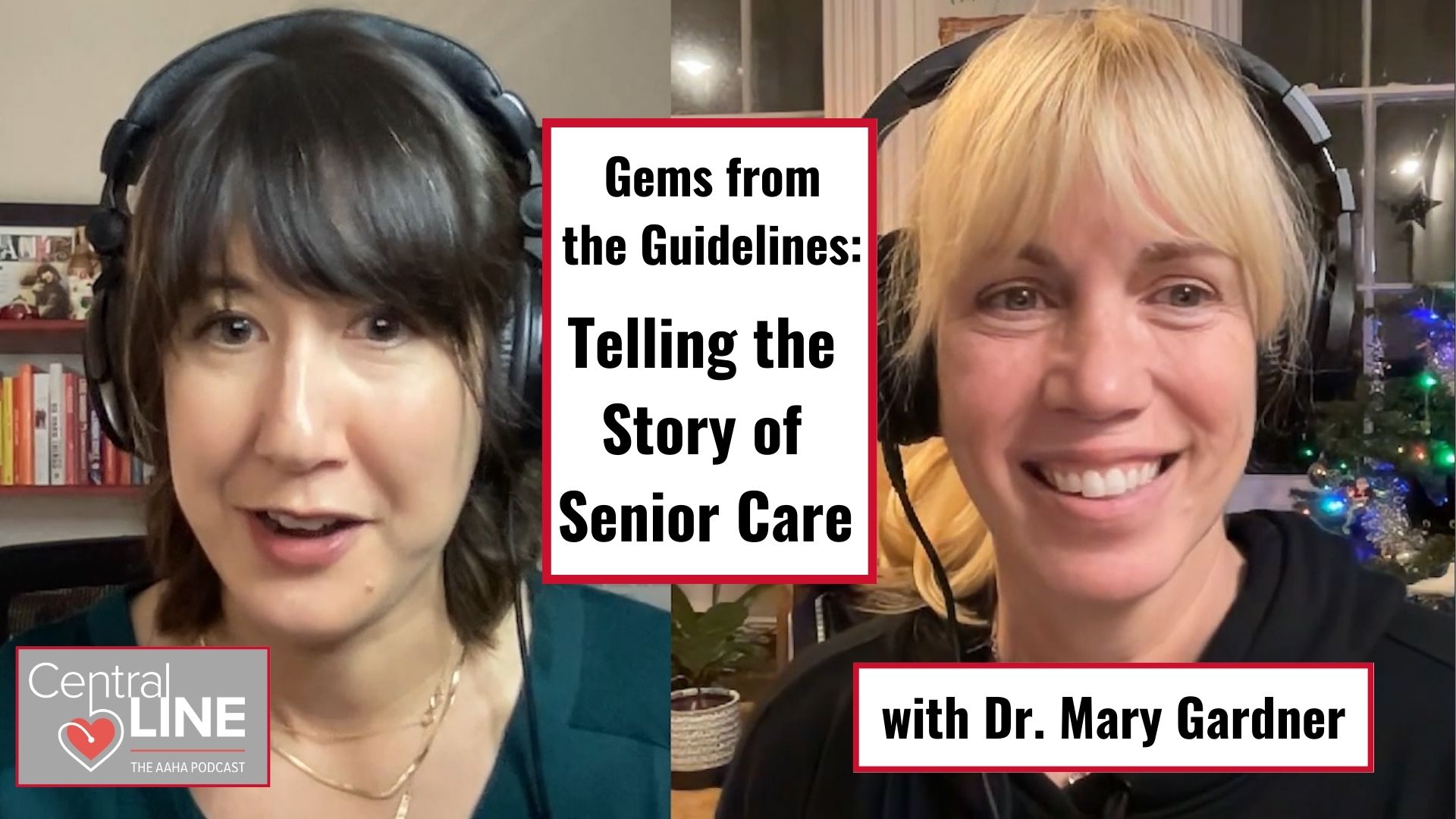
"Everybody thinks I'm so sad . . . they say, 'You and your veterinarians, you euthanize three pets a day; doesn't that get on your emotional toll?' Yes, we cry. I get sad with the families for sure, but what really makes me sad is that so many families have not been to the veterinarian in years before they say goodbye, and it's nearly 50% of families have not . . . And that's not [just] Lap of Love; that's all across the country. I looked at almost a million pets that were euthanized and almost half had not been to their doctor a year before they passed.
I think we could do so much to get them into the clinic, and when they are into the clinic, to care for them the way they need—with such individualized care . . . The [2023 AAHA Senior Care Guidelines for Dogs and Cats are] a great start and foundation to build a better senior program."
—Mary Gardner, DVM
Episode 41: Gems from the Guidelines: Telling the Story of Senior Care
__________________________________
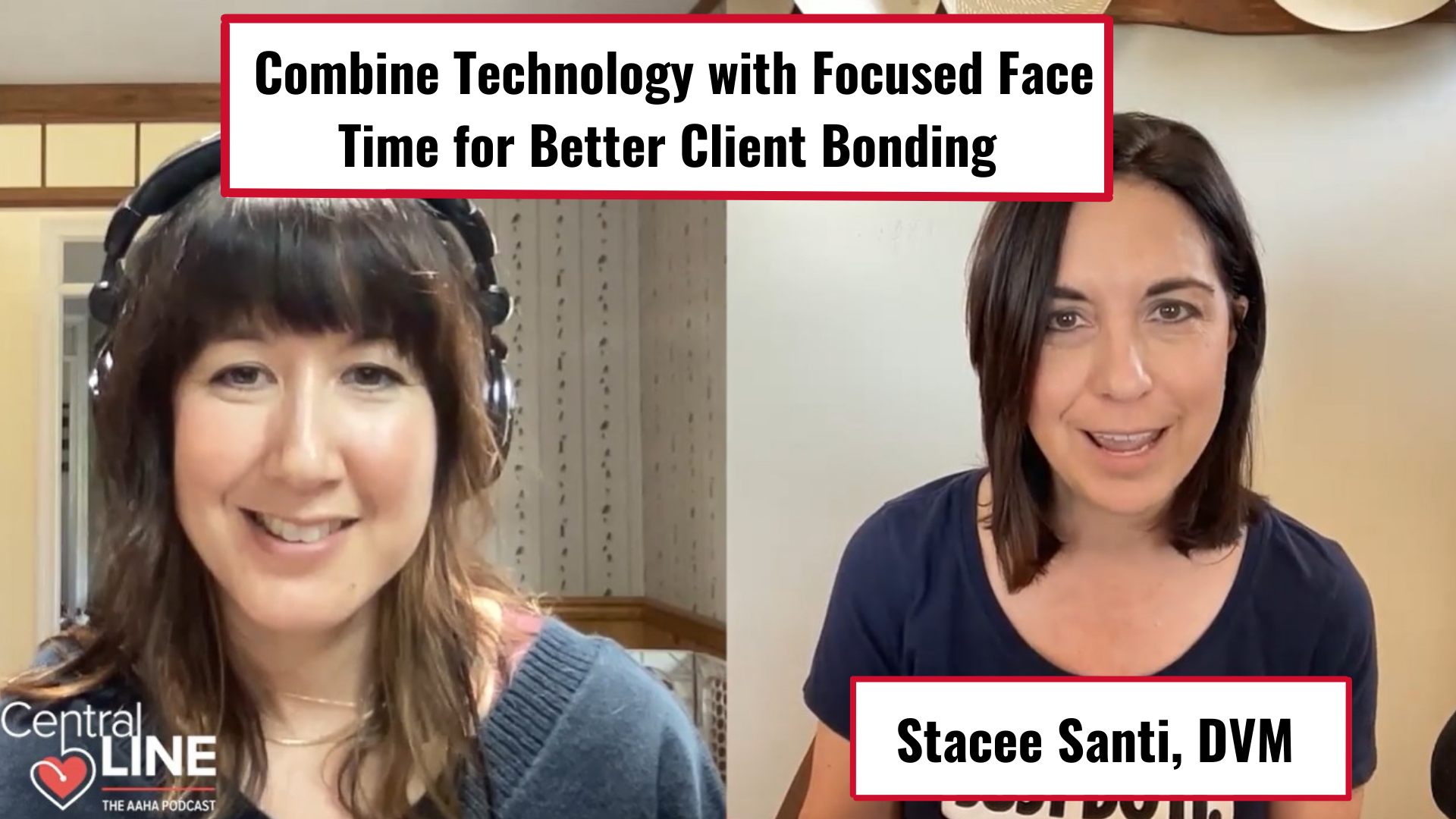
“I'm a stickler for an excellent client experience. I really find the whole dynamics of having a great relationship with your client extremely rewarding, and so my journey is weird because I ended up being very frustrated with what I would consider the very lame tools that veterinarians have to communicate with their clients in practice.
Around 2010, I was really striving to help people give their monthly heartworm prevention, and all I had was these dumb stickers in a box to give to people to put on their calendar. And I really wanted to be able to send a push notification to people on their phone, because I noticed that when my phone would be sitting there, I would suddenly be craving a double pepperoni pizza from Domino's because I get a push notification. And I thought, ‘I want to be able to do that for my clients with their heartworm medicine. How cool would that be?’”
—Stacee Santi, DVM
Episode 9: Combine Technology with Focused Face Time for Better Client Bonding
__________________________________
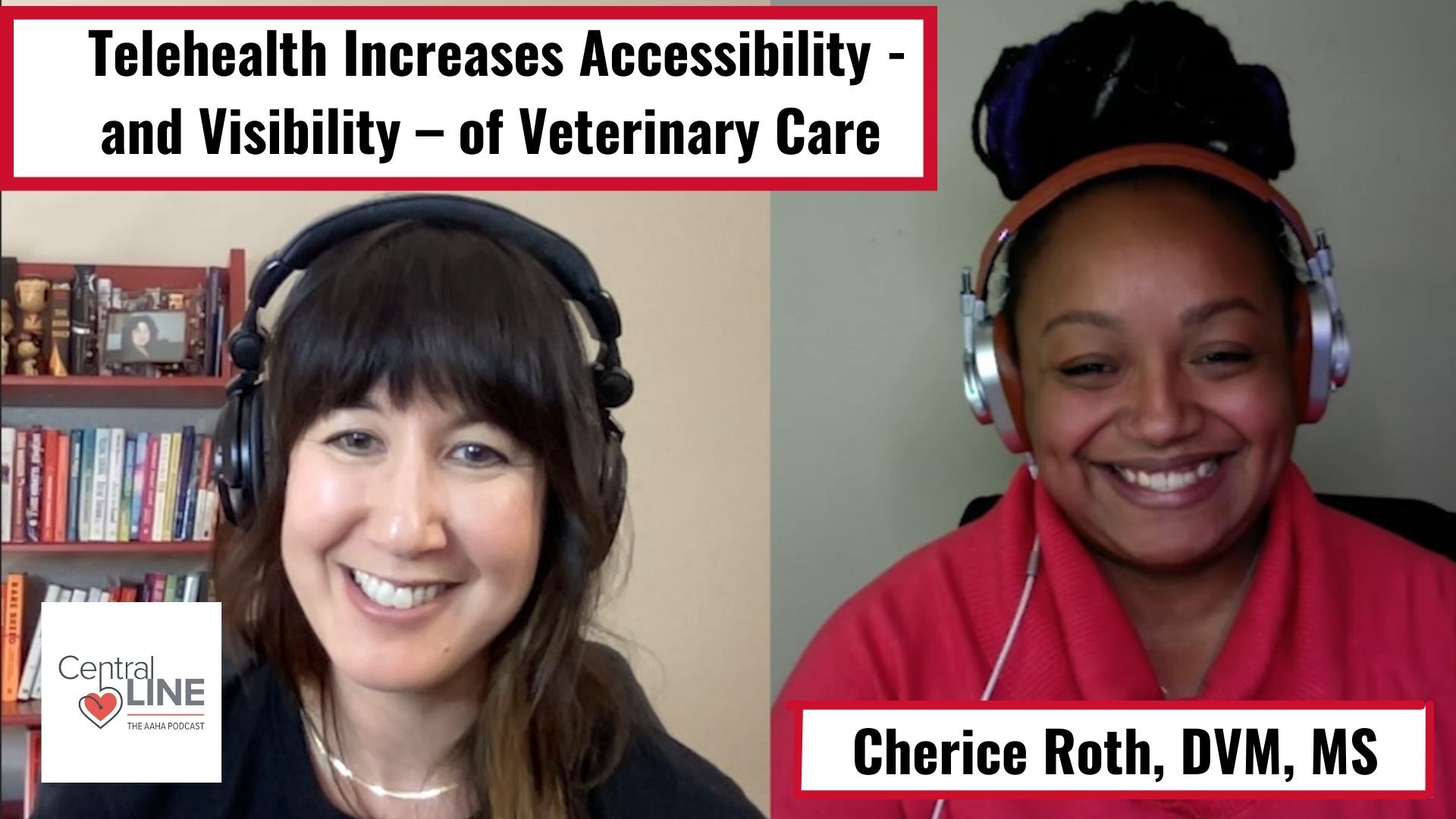
“[We] know that there are 100 million pets right now in the US without care . . . and those families are going to have all different backgrounds; they're going to have all sorts of socioeconomic statuses. And by opening the door to telehealth, you're allowing those families to fit veterinary medicine into their life. And when you do that, you're able to interact and say, ‘Hey, here's the value that a veterinarian could provide.’
My very first dog died in my backyard. And it was when I was little. I'm the oldest of five kids. The dog was not short on love. We absolutely loved Ebony. We adored her. We did not know how sick she was. We did not know that she couldn't wait until the weekend for my mom to be able to take off work. Right? We were fully intending [to] find her a doctor [but] she didn't make it.
[T]here are moments in these telehealth conversations—and it happens every day—that my team gets to be that voice for that pet in that moment of, ‘Hey, I see you; you care so deeply for this dog; you've found us. Here we are. Let's meet you where you are, and then let's get that pet to where they need to go, if they need to go somewhere.’ . . . Sometimes it's simple things like, ‘Actually, that's not a tick; that's a nipple. You're good.’”
—Cherice Roth, DVM
Episode 19: Telehealth Increases Accessibility—and Visibility—of Veterinary Care
__________________________________
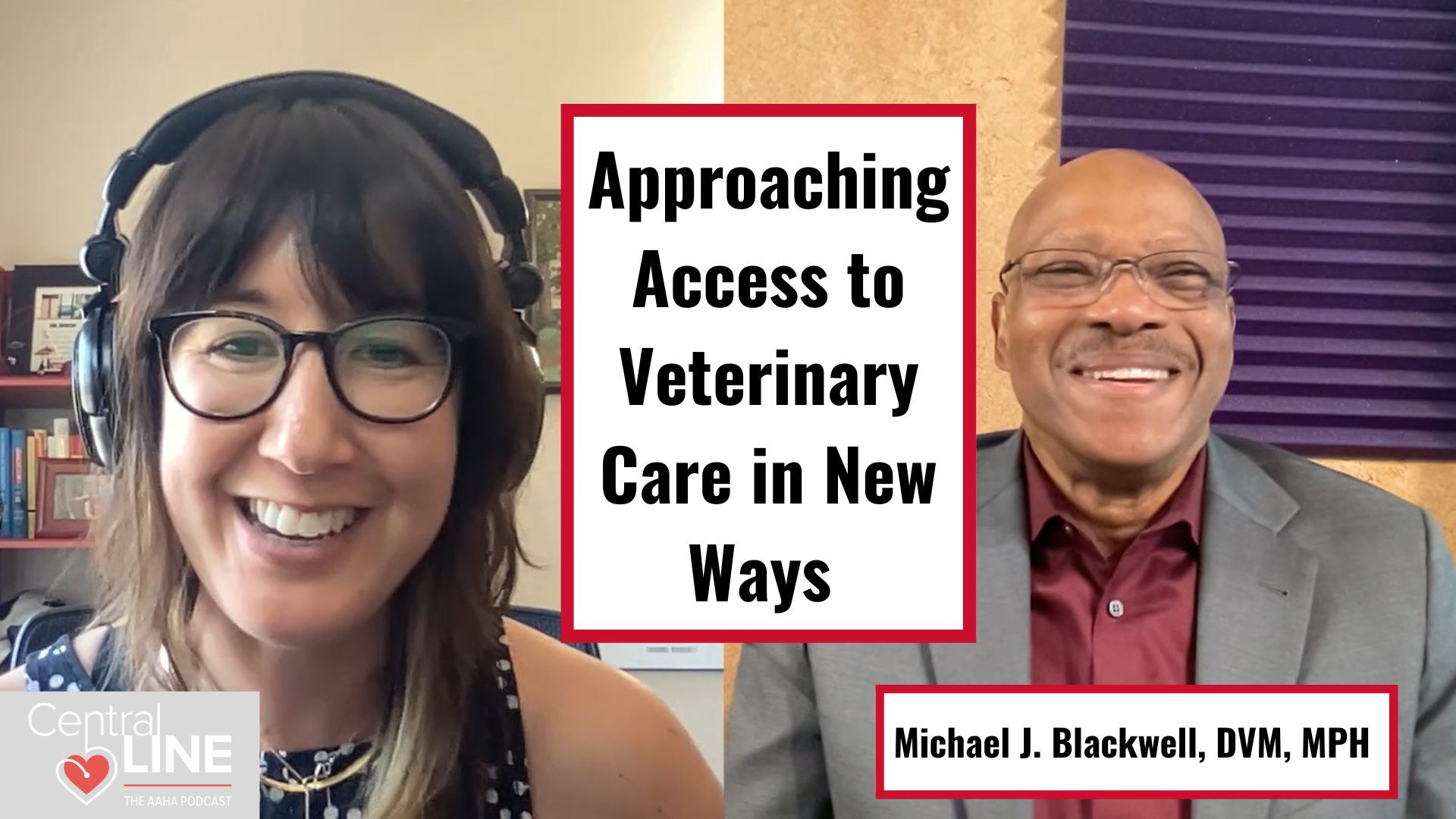
“[A] succinct way to put this is, just as in human medicine, ultimately some third party is helping to pay for the care. It's not rocket science that the same challenge exists with veterinary medicine. So AlignCare is truly subsidized healthcare. And . . . where does that money come from? Well, our intent is to build the capacity for our society to support their families through multiple means, not just grants given by animal welfare organizations, but corporate policies such that funding starts to show up at the community level to support the families of that community. At the end of the day, in other words, in the exam room, the client has come in and has limited funds, the veterinary practice can't stay healthy and give away the whole shop. So there's a limit to what the practice can do. And then there, that gap that exists is where a subsidy fits in. Again, it's not strange to me because that's exactly what happens in human healthcare.”
—Michael Blackwell, DVM
Episode 26: Approaching Access to Veterinary Care in New Ways
__________________________________
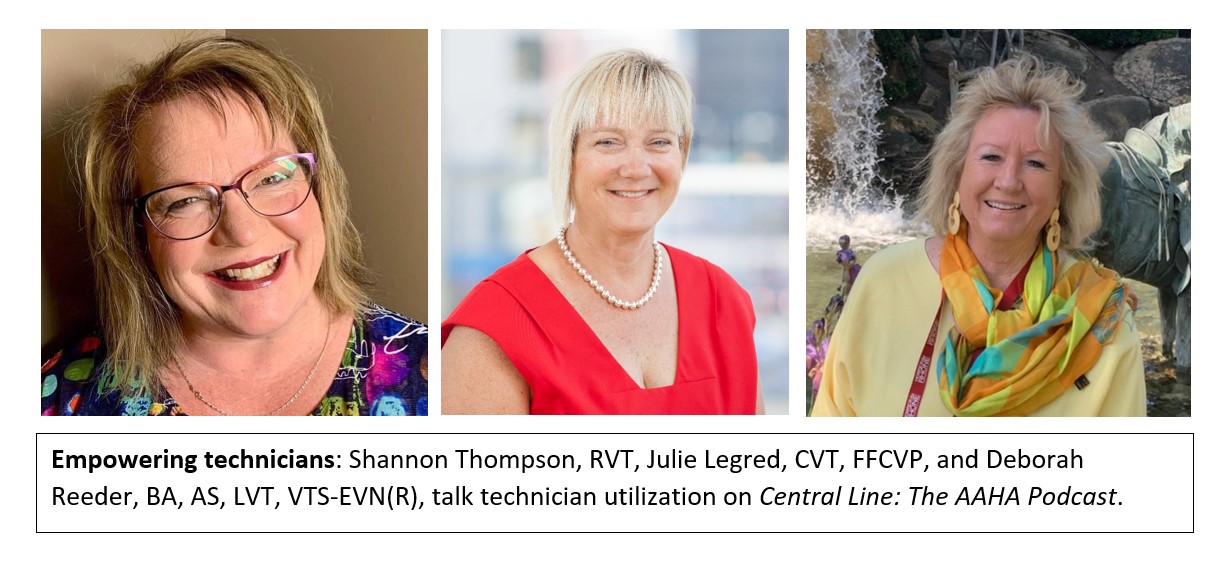
"I've supported many new veterinarian graduates in being comfortable and confident in their skills and it's the same thing with our RVTs: They're coming in and they're new, and they're fresh, and they haven't had practice. Do we expect them to do nerve blocks and epidurals on day one? No. But with a supportive team and goals and talking to each other and saying, ‘How can we make our team more efficient? ... Where do you want to go? How can you do it together? Where can we get additional training and support? How can we utilize some other things? How can we elevate our care?’”
— Shannon Thompson, RVT
“[T]he passions within each individual can be extremely powerful on a team. If you have somebody that's really passionate about, say, parasite control, use their passions and let it show throughout the practice, because that's ultimately going to help that pet and the owner understand what it is we're asking them to do.”
— Julie Legred CVT, FFCVP
“It's almost like creating a triage approach to every appointment and every animal that comes in like, ‘Okay, who is the most qualified in this area? Who's the most qualified here? Who can handle this?’ Making sure everybody knows where their arena is doesn't mean we don't cross-train, because we love being cross-trained, and [we] do that as well. But I think it's that approach instead of, ‘Okay, this is all on me?’ It’s: ‘Who can help?’”
— Deborah Reeder, BA, AS, LVT
Episode 28: Vital, Not Basic: Elevating Veterinary Technicians Benefits Everyone
__________________________________
Catch Central Line anywhere you get your podcasts, including Apple, Spotify, and Stitcher; on YouTube; or find links to all of these platforms, full audio and video, and transcripts to every episode at aaha.org/podcast.
Love Central Line? Please subscribe/follow and leave us a rating and review – it helps others find us! Send us feedback anytime at [email protected].
Disclaimer: The views expressed, and topics discussed, in any NEWStat column or article are intended to inform, educate, or entertain, and do not represent an official position by the American Animal Hospital Association (AAHA) or its Board of Directors.



